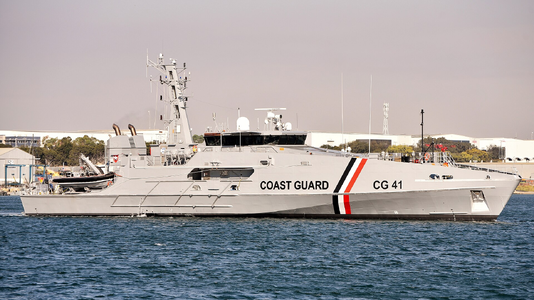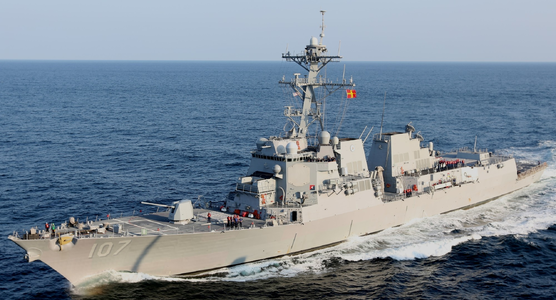lawtig02
Legend of ZZL
- Messages
- 5,081
Lol. 14% of the US Navy parked off the coast of a country that wouldn't rank among the top 50 global threats is a "small percentage?"Sounds like a small percentage.
I was wrong. You still will JCD anything.
Follow along with the video below to see how to install our site as a web app on your home screen.
Note: This feature may not be available in some browsers.
Lol. 14% of the US Navy parked off the coast of a country that wouldn't rank among the top 50 global threats is a "small percentage?"Sounds like a small percentage.
I'm trying to arrange a pettifoggery playoff between him and Stanky.Lol. 14% of the US Navy parked off the coast of a country that wouldn't rank among the top 50 global threats is a "small percentage?"
I was wrong. You still will JCD anything.
Not anything, but I do think the ZZL baseline panic level is high.Lol. 14% of the US Navy parked off the coast of a country that wouldn't rank among the top 50 global threats is a "small percentage?"
I was wrong. You still will JCD anything.
I learned a new word.I'm trying to arrange a pettifoggery playoff between him and Stanky.
Yeah, but you also think 14% of our navy fleet parked outside of Argentina is a small percentage, which illustrates to us you don’t have a strong understanding of proportionality.Not anything, but I do think the ZZL baseline panic level is high.
According to Gemini, you are correct:Yeah, but you also think 14% of our navy fleet parked outside of Argentina is a small percentage, which illustrates to us you don’t have a strong understanding of proportionality.
Disproportionate?According to Gemini, you are correct:
A small percentage is a proportion of a whole that is significantly less than the whole, often considered to be below 10% or even lower depending on the context
What is considered a huge percentage depends heavily on context, but it generally refers to a portion much larger than expected. While a simple majority is over 50%, "huge" or "vast majority" is typically a higher, more convincing number, often 75% or more.
So, whatever is a little more than small would be accurate.
If we're going to use Gemini as an arbiter, why not ask it the actual question:According to Gemini, you are correct:
A small percentage is a proportion of a whole that is significantly less than the whole, often considered to be below 10% or even lower depending on the context
What is considered a huge percentage depends heavily on context, but it generally refers to a portion much larger than expected. While a simple majority is over 50%, "huge" or "vast majority" is typically a higher, more convincing number, often 75% or more.
So, whatever is a little more than small would be accurate.
Ok. We should also ask what is normal for training exercises, since that it why they are there, according to the AP.If we're going to use Gemini as an arbiter, why not ask it the actual question:
In military terms, a concentration of 14% of the U.S. naval fleet in a single area is a very large and significant buildup. While the U.S. Navy maintains large concentrations of ships at major homeports, a deployment of this scale to a specific, active region is highly unusual and sends a strong strategic message.
Don't you have a law degree?I learned a new word.
As did I and it is now my favorite English compound word.I learned a new word.


As long as you don’t pay attention to this part of Gemini’s response: “What is considered a huge percentage DEPENDS HEAVILY on context, but it generally refers to a portion MUCH LARGER THAN EXPECTED.”According to Gemini, you are correct:
A small percentage is a proportion of a whole that is significantly less than the whole, often considered to be below 10% or even lower depending on the context
What is considered a huge percentage depends heavily on context, but it generally refers to a portion much larger than expected. While a simple majority is over 50%, "huge" or "vast majority" is typically a higher, more convincing number, often 75% or more.
So, whatever is a little more than small would be accurate.
I think we all know that the "training exercise" is being structured to intimidate Venezuela.Let's just explore for a moment the proposition that we did, in fact, send the USS Gravely, a guided missile destroyer, to Trinidad & Tobago for a "training exercise" with that country, as the US claims according to the AP (notably, the administration has not claimed any of the other ships deployed to the region, including the Gerald Ford, are part of this "training exercise").
1. Trinidad & Tobago has no navy. None. It does have a Coast Guard with three active offshore patrol vessels. Here's a photo of the newest one --
That training exercise with a US guided missile destroyer is going to be ... something.
2. Even if the Gravely is there for a training exercise, what exactly is it training for? Maybe to carry out or support the land strikes Trump is planning within Venezuela?
Look, I get why Zen is so prickly about this. It was only a few weeks ago that he SWORE we would not get into a military conflict with Venezuela. He called out those of us who were concerned about it as "panicky." I'm really not sure why Zen keeps doubling down on this particular issue, though. It's not like this is the first time he'll be wrong on this board.
Interesting. So if Mexico launched missiles at gun manufacturing facilities in the US, you wouldn't consider that an act of war?I think we all know that the "training exercise" is being structured to intimidate Venezuela.
I predicted that the US would not be at war with Venezuela. Something I still believe to be true.
If the US is dumb enough to launch missiles directed at drug cartel locations, I would not consider that to be "war". War involves 2 nations fighting.
I would consider it to be an act of war. If the entire incident stopped with that one attack, I would not have considered the US and Mexico to have been "at war". Would you?Interesting. So if Mexico launched missiles at gun manufacturing facilities in the US, you wouldn't consider that an act of war?
Of course. As would pretty much every American not named ZenMode. And lolololol at the idea that we would just sit back and sue for peace after a Mexican cruise missile takes out the Smith & Wesson factory in Maryville, Tennessee.I would consider it to be an act of war. If the entire incident stopped with that one attack, I would not have considered the US and Mexico to have been "at war". Would you?
